Accepted Scientific Name: Coryphantha poselgeriana (A.Dietr.) Britton & Rose
Cactaceae (Britton & Rose) 4: 28. 1923 [24 Dec 1923] Britton & Rose

Coryphantha poselgeriana var. valida Photo by: Raimondo Paladini
Coryphanta poselgeriana var valida - Tetillas, Mexico. New spines.
Origin and Habitat: It grows in the Mexican states of Coahuila, San Luis Potosí, Nuevo León, Zacatecas and Durango.
Habitat: Widespread in alluvial plains with bare, sandy or gravely soils, often on gypsum.
Synonyms:
See all synonyms of Coryphantha poselgeriana
back
Accepted name in llifle Database:Coryphantha poselgeriana (A.Dietr.) Britton & RoseCactaceae (Britton & Rose) 4: 28. 1923 [24 Dec 1923]Synonymy: 10
back
Common Names include:
ENGLISH: Needle Mulee
Description: Coriphantha poselgeriana is a heavily spined, imposing species, and reminds one of an Echinocactus. The nomenclature of this variable taxon is quite confusing. Coriphantha poselgeriana has two forms, often referred to as distinct varieties or subspecies. The forms from North of the Sierra de Paila are more strongly spined (Coryphantha poselgerianaSN|10365]]SN|10245]] var. valida) than the ones to the South, which have more radials (Coryphantha poselgeriana var. saltillensisSN|10245]]SN|10365]]). But the transition is continuous, and separation of a subspecies is questionable.
Stem: Globular to short cylindrical, solitary or slowly clumping, reaching up to 30 cm in height and 18 cm in width. Dull bluish green, apex rounded and woolly.
Roots: Thin taproot.
Tubercles: Up to 2(-3) cm long and 5 cm wide, convex, conical, 4-6 edged with a deep wooly groove, near the areole, rounded near the end. Parastichy number 8-13. With yellow-orange glands over the whole length. Axil woolly with glands.
Areoles: About 7 mm wide, round with short wool.
Radial spines: 5 to 12, with 7-8 of them radiating sideways and downwards, straight or recurved, strong, subulate, the 3-4 lower ones are somewhat fattened, up to 30-40 mm long. Whitish, later reddish or blackish, with a darker tip and ultimately greysh.
Central spines: 1, straight, porrect, with light tip. Similar in shape and colour to lower radials.
Flowers: 6-7 cm, varying from whitish-rose with a pink centre, to carmine red, and in San Luis Potosí even yellow-flowering forms occur.
Fruits: Green, juicy, with persisting flower remnants. 25-50mm long, 7-18 in diameter.
Seeds: Reniform 2-2,5 mm long, 1,5 mm wide.
Subspecies, varieties, forms and cultivars of plants belonging to the Coryphantha poselgeriana group
 Coryphantha poselgeriana (A.Dietr.) Britton & Rose: is a heavily spined, imposing species. Radial spines 5 to 12, strong, subulate up to 30-40 mm long. Central spines 1, straight, porrect. Distribution: Chihuahua, Coahuila, San Luis Potosí, Nuevo León, Zacatecas and Durango.
Coryphantha poselgeriana (A.Dietr.) Britton & Rose: is a heavily spined, imposing species. Radial spines 5 to 12, strong, subulate up to 30-40 mm long. Central spines 1, straight, porrect. Distribution: Chihuahua, Coahuila, San Luis Potosí, Nuevo León, Zacatecas and Durango.- Coryphantha poselgeriana var. saltillensis (Poselg.) L.Bremer: South Sierra de Paila. It has more radials.
 Coryphantha poselgeriana var. valida (J.A.Purpus) Heinrich ex Backeb.: North of the Sierra de Paila. This form is the more strongly spined.
Coryphantha poselgeriana var. valida (J.A.Purpus) Heinrich ex Backeb.: North of the Sierra de Paila. This form is the more strongly spined.
Bibliography: Major references and further lectures
1) Goettsch, B.K. & Corral-Díaz, R. 2013. Coryphantha poselgeriana. The IUCN Red List of Threatened Species. Version 2015.1. <www.iucnredlist.org>. Downloaded on 07 June 2015.
3) David Hunt, Nigel Taylor “The New Cactus Lexicon” DH Books, 2006
4) Nathaniel Lord Britton, Joseph Nelson Rose “Cactaceae: Descriptions and Illustrations of Plants of the Cactus Family” vol. 4 The Carnegie Institution of Washington, Washington 1923
5) Edward F. Anderson “The Cactus Family” Timber Press, 2001
6) James Cullen, Sabina G. Knees, H. Suzanne Cubey “The European Garden Flora Flowering Plants: A Manual for the Identification of Plants Cultivated in Europe, Both Out-of-Doors and Under Glass” Cambridge University Press, 11/August/2011
7) Urs Eggli, Leonard E. Newton "Etymological Dictionary of Succulent Plant Names". Springer, Berlin/Heidelberg 2010
8) Reto Dicht, Adrian Lüthy "Coryphantha: Cacti of Mexico and Southern USA" Springer Science & Business Media, 14 March 2006
9) Willy Cullmann, Erich Götz (Dozent Dr.), Gerhard Gröner "The encyclopedia of cacti" Timber Press, 1987
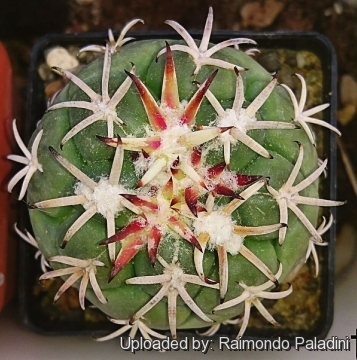 Coryphanta poselgeriana var valida - Tetillas, Mexico. New growth. Photo by: Raimondo Paladini
Coryphanta poselgeriana var valida - Tetillas, Mexico. New growth. Photo by: Raimondo Paladini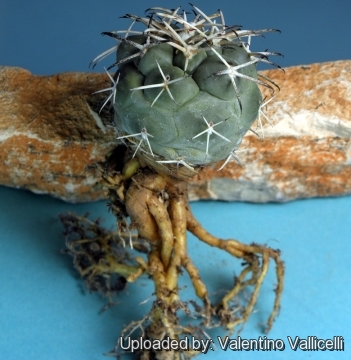 Coryphantha poselgeriana var. valida Photo by: Valentino Vallicelli
Coryphantha poselgeriana var. valida Photo by: Valentino Vallicelli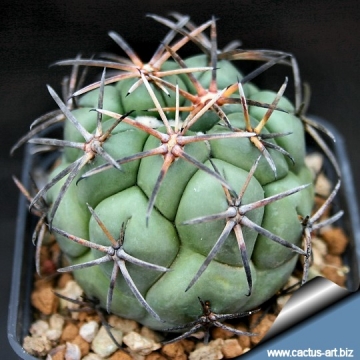 Coryphantha poselgeriana var. valida Photo by: Cactus Art
Coryphantha poselgeriana var. valida Photo by: Cactus Art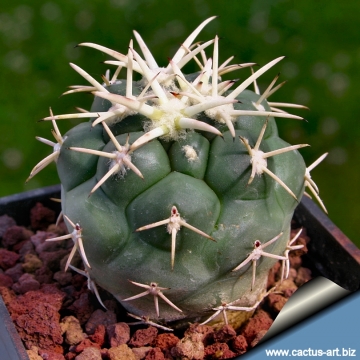 Coryphantha poselgeriana var. valida Photo by: Cactus Art
Coryphantha poselgeriana var. valida Photo by: Cactus Art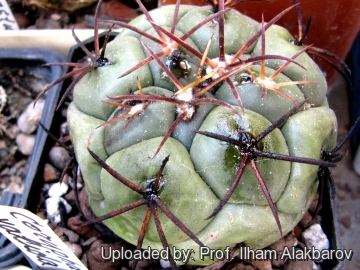 Coryphantha poselgeriana var. valida Photo by: Prof. Ilham Alakbarov
Coryphantha poselgeriana var. valida Photo by: Prof. Ilham Alakbarov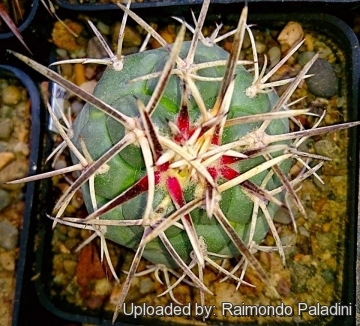 Coryphantha poselgeriana var. valida Photo by: Raimondo Paladini
Coryphantha poselgeriana var. valida Photo by: Raimondo Paladini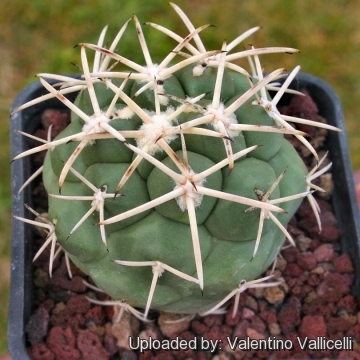 - VZD64 Laguna Viesca , Coahuila. This plant has a characteristic silver epidermis, robust stem, and beautiful flowers. Photo by: Valentino Vallicelli
- VZD64 Laguna Viesca , Coahuila. This plant has a characteristic silver epidermis, robust stem, and beautiful flowers. Photo by: Valentino Vallicelli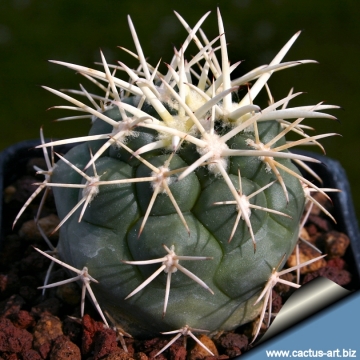 Coryphantha poselgeriana var. valida Photo by: Cactus Art
Coryphantha poselgeriana var. valida Photo by: Cactus ArtCultivation and Propagation: This plant grows in the same habitat as Echinocactus horizonthaloniusSN|1711]]SN|1711]], with which it has some cultivation problems in common: slow-growing, seldom reaching the same size as in nature, sensitive against over-watering. Water sparingly. It needs good drainage. Keep drier in winter. Full sun to partial shade. Full sun to partial shade. In humid conditions, the exudation of nectar (if not completely removed by ants) can cause the formation of mould, which leads to ugly black-colouring of the epidermis. To prevent this, spray the plant with water to remove the nectar. And provide very good ventilation.
Propagation: Seeds.



















